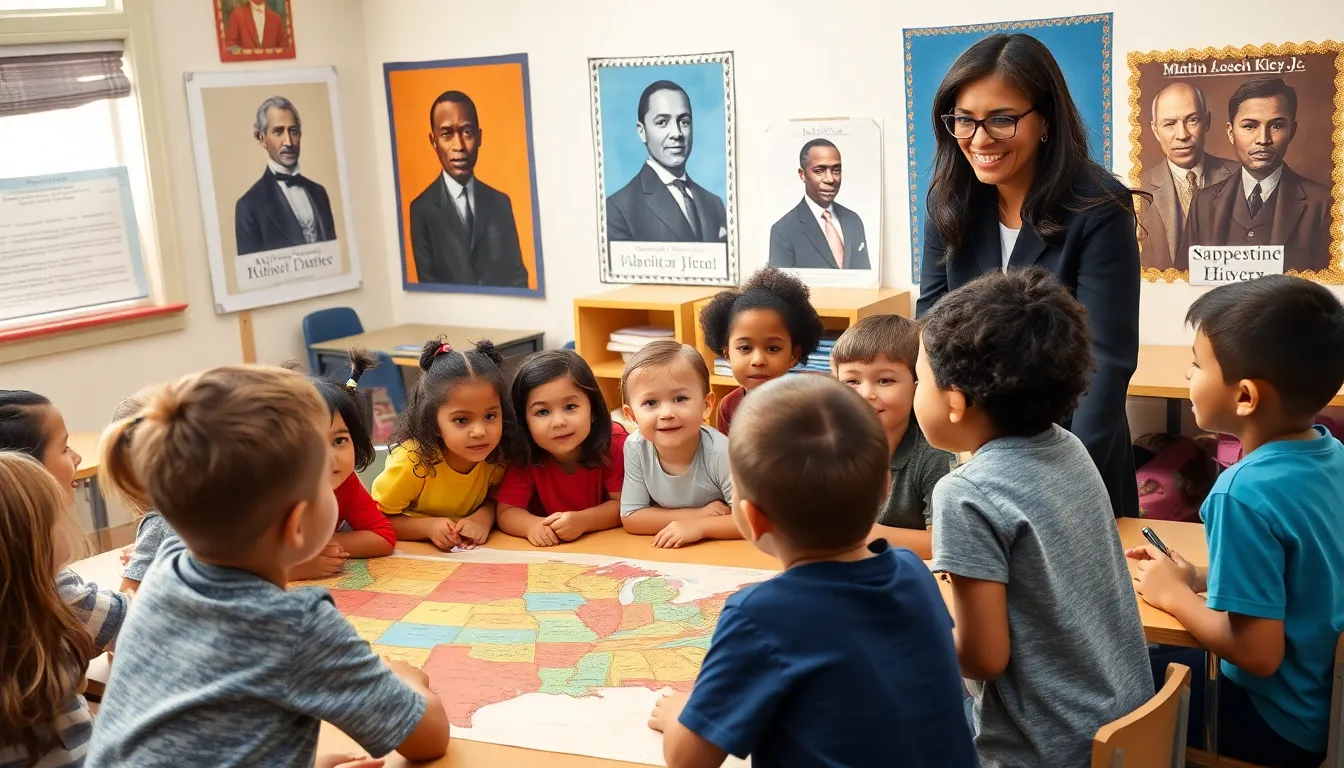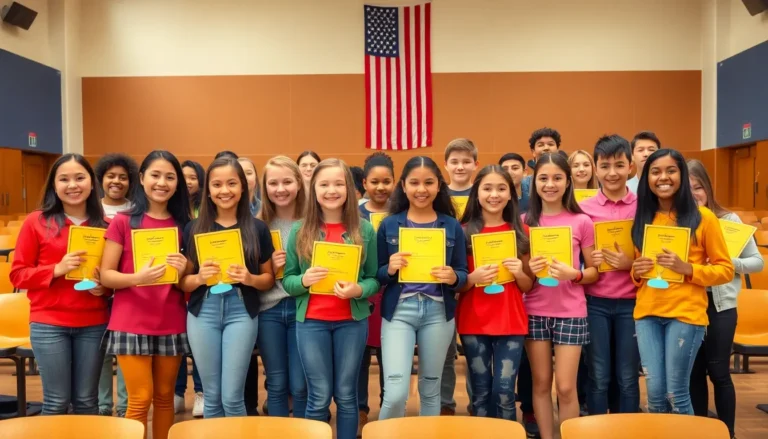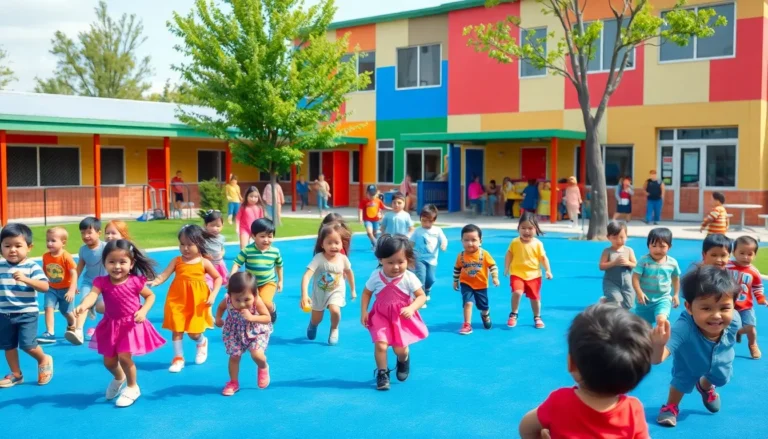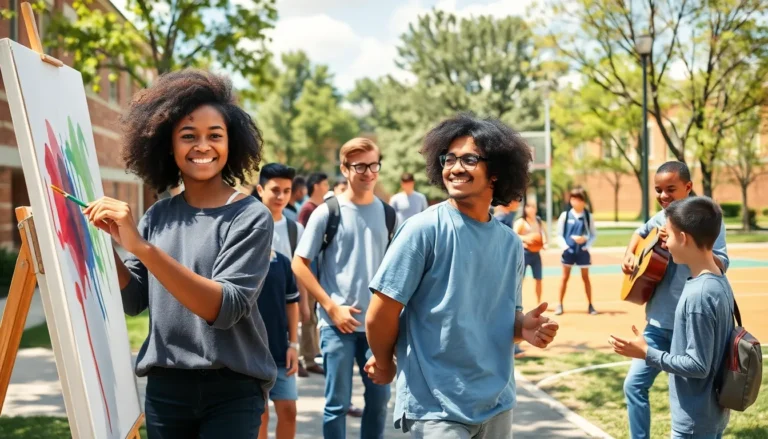Elementary history lessons are like a treasure chest filled with fascinating stories and characters that shaped the world. Imagine a classroom where kids can travel back in time to meet brave explorers, legendary leaders, and even the occasional dinosaur—well, maybe not the last one. These lessons spark curiosity and ignite imaginations, turning young learners into mini-historians eager to uncover the past.
Table of Contents
ToggleOverview of Elementary History Lessons
Elementary history lessons introduce students to important events and figures that have greatly influenced society. Such lessons present history as a series of engaging stories, rather than a mere collection of dates. Explorers, leaders, and thinkers often come to life in the classroom, making the content relatable.
Curricula often include significant periods such as ancient civilizations, the Middle Ages, and the American Revolution. Children learn about the contributions of diverse cultures and societies throughout history. These lessons aim to cultivate critical thinking and analytical skills while enabling students to understand the context of historical events.
Visual aids, such as maps and timelines, play a role in facilitating comprehension. Interactive activities like role-playing or group projects enhance engagement, allowing students to experience history firsthand. Teachers often encourage discussions, prompting students to share their thoughts on historical significance.
Assessment methods for elementary history lessons typically include quizzes, projects, and presentations. Continuous feedback helps students track their understanding of key concepts. Ultimately, this approach nurtures a sense of appreciation for history, encouraging students to explore their surroundings and understand the past’s impact on the present.
With an emphasis on storytelling and interaction, elementary history lessons lay a solid foundation for future historical studies. Teachers guide students through critical analyses of events and their implications, fostering an environment where history resonates with young minds.
Importance of Teaching History in Elementary Schools
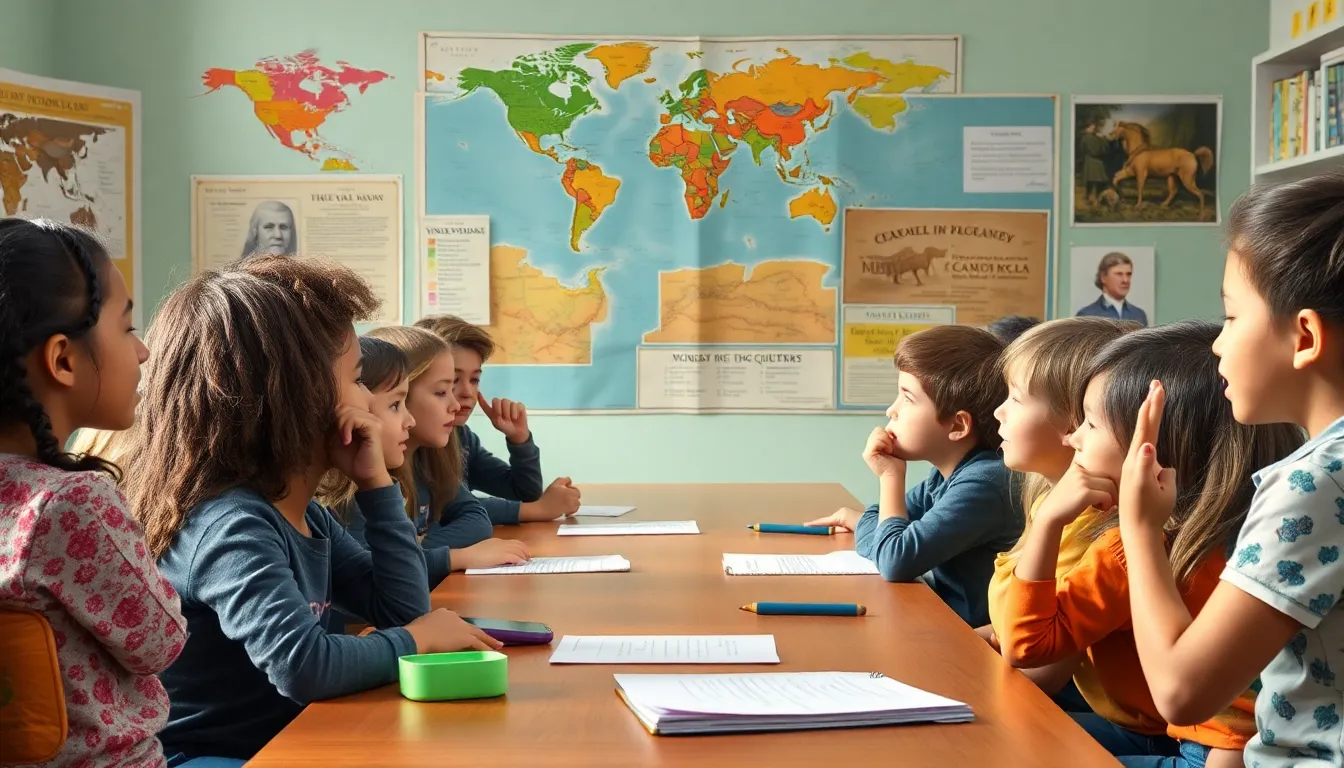
Teaching history in elementary schools plays a crucial role in shaping young minds. Engaging lessons inspire curiosity and foster a passion for learning about the past.
Developing Critical Thinking Skills
Elementary history lessons encourage students to analyze events critically. Assignments such as debates or group discussions foster deeper understanding. Students learn to evaluate sources and distinguish between fact and opinion. Engaging in these activities promotes skills essential for academic success. They practice connecting historical events to contemporary issues, helping them think contextually. This foundational skill set prepares students for more complex studies in higher grades.
Understanding Cultural Heritage
History education exposes students to diverse cultural heritages. Each lesson introduces them to significant contributions made by various societies. Learning about different cultures fosters empathy and respect for others. Students explore how past events shape modern identities and societies. These lessons provide a broader perspective, allowing students to appreciate their own backgrounds. Discovering cultural narratives cultivates a sense of belonging and enhances social cohesion.
Key Themes in Elementary History Lessons
Elementary history lessons present foundational themes that equip students with essential knowledge and skills. Engaging activities foster curiosity about the past, allowing students to see their role in history.
American History Through the Ages
American history lessons explore pivotal events from pre-Columbian times to the modern era. Educators introduce topics like Native American cultures, colonization, and the Civil Rights Movement. These subjects highlight the struggles and triumphs that shaped the nation. Through storytelling, students learn about influential figures such as George Washington, Sojourner Truth, and Martin Luther King Jr. Each lesson weaves narratives that emphasize the diverse experiences of Americans across time. Activities like timeline creation deepen students’ understanding of cause-and-effect relationships in history.
World History Snapshots
World history lessons provide glimpses into significant global events and cultures, enriching students’ perspectives. They cover ancient civilizations like Egypt and Greece, along with milestones such as the Renaissance and World Wars. Students encounter iconic leaders, including Cleopatra and Mahatma Gandhi, helping them appreciate different cultural impacts. Interactive projects may involve exploring artifacts or creating presentations on various nations. Understanding the interconnectedness of global societies fosters a broader worldview while promoting empathy and respect for diversity. Through these snapshots, learners gain valuable insights into historical dynamics and their influence on contemporary society.
Effective Teaching Strategies for Elementary History
Effective teaching strategies enhance elementary history lessons, encouraging active participation and deeper understanding. Engaging students through hands-on activities sparks their interest in the past.
Interactive Learning Approaches
Interactive learning captures students’ attention and promotes collaboration. Role-playing activities allow learners to embody historical figures, fostering empathy. Group projects enable students to work together on significant events, encouraging peer discussions that deepen their insights. Exploring primary sources, like letters and documents, cultivates critical analysis skills. Incorporating games related to historical themes adds an element of fun while reinforcing the curriculum. By using storytelling techniques, teachers can create relatable narratives that resonate with students and encourage their curiosity about history.
Incorporating Technology in Lessons
Technology integration offers dynamic ways to engage students with historical content. Interactive websites and virtual tours provide students opportunities to explore landmarks and museums from anywhere. Digital tools encourage creativity through multimedia presentations, allowing students to express their understanding in diverse formats. Online research projects empower students to discover information about specific historical topics, building their research skills. Incorporating educational apps makes learning history more interactive, fostering engagement through quizzes and games. Utilizing videos helps visualize historical events, establishing a stronger connection to the material.
Common Challenges in Teaching History
Teaching history in elementary classrooms presents several challenges. Engaging students’ interest stands out as a primary concern. Captivating narratives and relatable figures can spark curiosity. Additionally, integrating storytelling techniques makes lessons more compelling. Teachers often explore creative methods, including interactive projects, to maintain enthusiasm. Incorporating multimedia resources like videos and podcasts can also enhance engagement. Students benefit from varied approaches that resonate with their interests.
Addressing diverse learning needs requires thoughtful strategies. Differentiating instruction supports various learning styles among students. Visual aids like infographics and timelines assist visual learners, while hands-on activities cater to kinesthetic learners. Teachers play a crucial role in creating inclusive environments. Regularly assessing understanding and adjusting lesson plans helps meet all students’ needs. Collaborative learning opportunities build a sense of community and respect among peers. Tailoring lessons directly affects students’ ability to connect with historical content.
Elementary history lessons serve as a vital foundation for young learners. By presenting history through engaging narratives and diverse perspectives, these lessons spark curiosity and foster a love for learning. Students not only gain knowledge about significant events and figures but also develop critical thinking skills that are essential for understanding the world around them.
The dynamic teaching strategies employed in these classrooms help create an inclusive environment where every student can thrive. As educators continue to innovate and adapt their approaches, the impact of elementary history education will resonate far beyond the classroom, shaping informed and empathetic future citizens. Ultimately, the journey through history ignites a lifelong passion for exploration and understanding.

